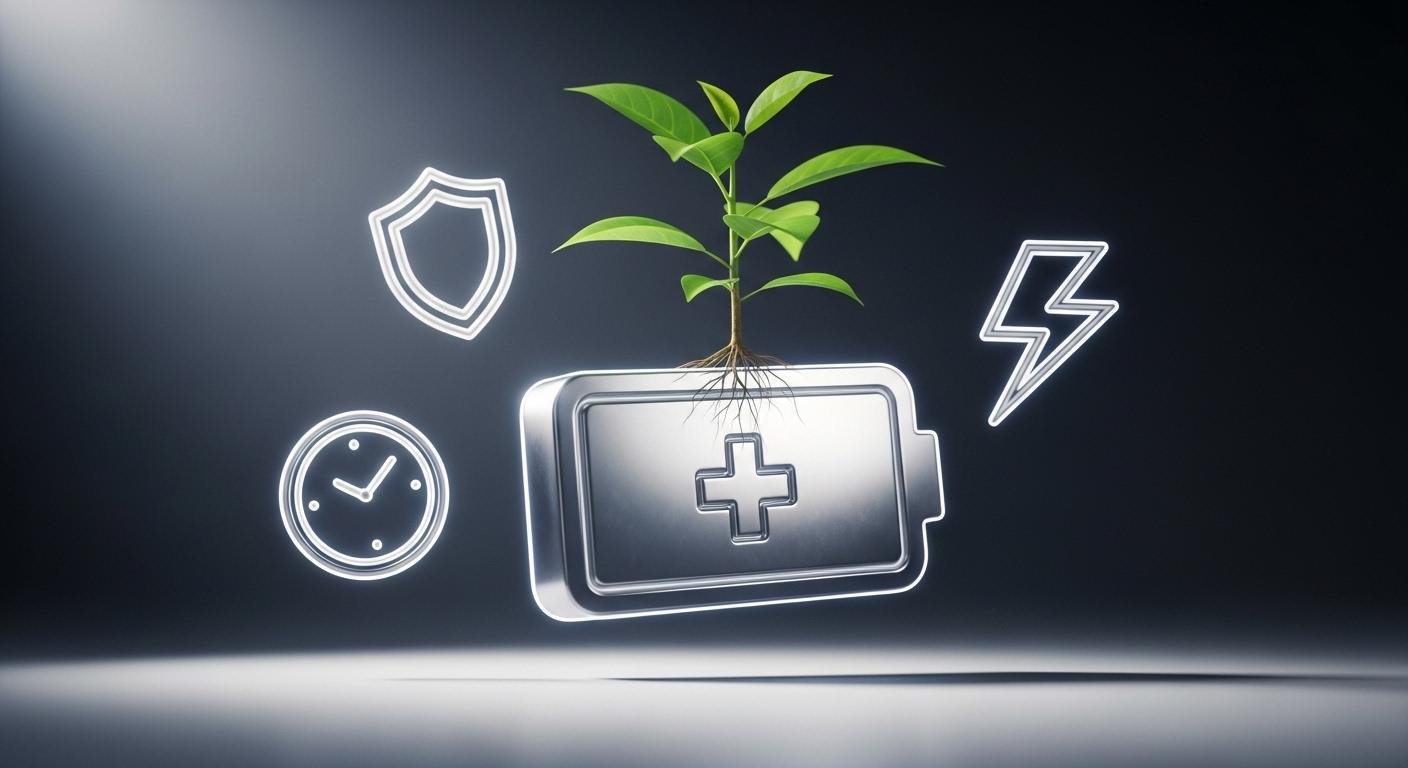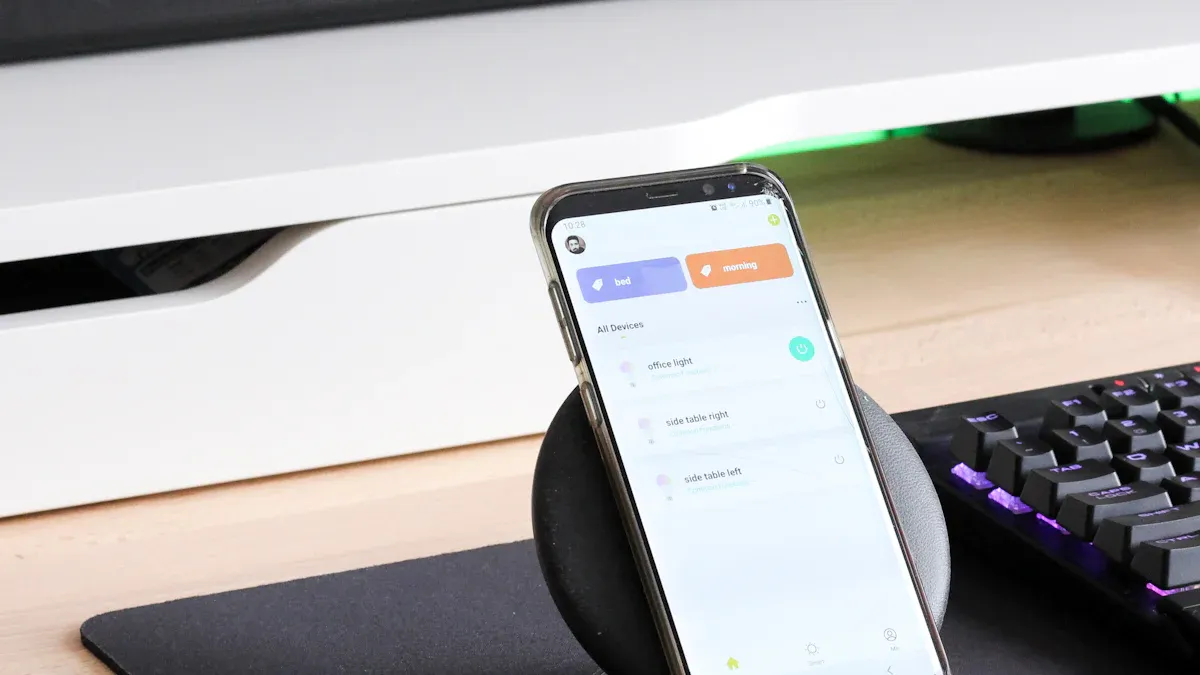
Simple charging habits are key to extending lifespan for your 3.7V lithium-ion battery. Your charging routine greatly impacts the lithium battery lifespan. You can achieve a longer battery life span with a few easy changes. This charging method protects your lithium battery.
The most critical actions for your lithium battery’s life involve smart charging and proper storage. Good charging helps the lithium battery.
- Avoid extreme temperatures during charging.
- Keep the battery charge between 20% and 80%.
- Use correct battery storage practices.
These simple charging habits help your battery exceed its typical 300-500 cycle lifespan.
Understanding Lithium-Ion Battery Maintenance
Proper lithium-ion battery maintenance starts with understanding how your battery works. You can make smart choices with a little knowledge. These choices protect your battery’s health and lifespan. Good maintenance habits are simple to learn. Following battery maintenance best practices ensures a longer life for your device.
What is a Charge Cycle?
You often hear about a battery’s lifespan in “charge cycles.” A single charge cycle is when you use 100% of the battery capacity. Manufacturers define this as charging a battery from 0% to 100% and then using it until it’s back at 0%.
This does not mean you must drain your battery completely for a cycle to count. If you use your battery from 100% down to 50% today, you have used half a cycle. Charging it back up and using another 50% tomorrow completes one full charge cycle. Every partial charging session adds up.
Key Factors in Battery Aging
Every rechargeable battery ages over time. For a lithium-ion battery, this aging happens because of slow chemical changes inside. These changes reduce the total battery capacity. The main factors in this process are:
- Internal Buildup: A layer called the Solid Electrolyte Interphase (SEI) grows on internal parts. This layer traps lithium particles. Fewer free lithium particles mean your battery holds less charge. This is a natural part of the charging process.
- Lithium Plating: Fast charging or charging in the cold can cause lithium metal to build up on the surface. This also reduces your battery capacity.
- Heat: High temperatures speed up these harmful chemical reactions. A hot battery degrades much faster than a cool one. Proper charging helps manage heat.
This is why your charging routine is so important for the battery. Your maintenance habits directly impact the speed of this aging.
The Goal: Extending Lifespan Beyond the Average
Most standard lithium-ion batteries have a typical lifespan of 300-500 charge cycles. After this, the battery capacity will noticeably decrease. However, this is not a fixed limit. Your goal is extending lifespan far beyond this average.
With careful maintenance and smart charging, some rechargeable lithium-ion batteries can last for 2,000 or even 3,000 cycles. A well-maintained rechargeable lithium battery keeps a high battery capacity for much longer. This means more years of reliable use from a single rechargeable battery. Effective lithium battery maintenance puts you in control of your battery’s lifespan.
Smart Charging for Extending Lifespan

Your charging habits are the most powerful tool for extending lifespan of your battery. Smart charging reduces stress on the internal components of your lithium battery. You can significantly increase your battery’s lifespan with a few simple adjustments. These best practices for charging are easy to adopt. They protect your investment and ensure your device performs well for years.
The 20-80% Rule Explained
Partial charging is the single most effective habit for a long battery life. You should avoid charging your lithium battery to 100% or letting it drop to 0%. The ideal range for daily use is between 20% and 80%. Keeping your charge in this zone minimizes stress on the battery cells. The sweet spot for maximizing the battery lifespan is actually between 40% and 80%.
The benefits are significant. A lithium battery rated for 1,200 cycles when charged from 0% to 100% can achieve 5,000 cycles if you keep its charge below 80%. This simple change in your charging routine can add thousands of cycles to your battery’s lifespan.
This practice keeps the lithium-ion cells in a stable state. It avoids the high voltage stress of a full charge and the damaging effects of a deep discharge. Following these best practices for charging is a simple way to get more from your lithium battery.
The Truth About Fast Charging
Fast charging offers great convenience. You can power up your device in a fraction of the time. However, this speed comes at a cost. The process generates significant heat. Heat is the primary enemy of a healthy lithium battery. Fast charging operations without proper cooling can cause internal temperatures to exceed 200°C (392°F). Such extreme heat is catastrophic for a lithium-ion battery.
So, should you avoid fast charging completely? Not necessarily. Modern devices have sophisticated thermal management systems. These systems help control the heat during a fast charging session. Real-world studies show the impact might be less than you think.
| Study Source | Vehicle/Data | Finding on Fast Charging Degradation |
|---|---|---|
| Recurrent Motors Inc. | 13,000+ Tesla Vehicles | No statistical difference in range loss between frequent and rare fast chargers. |
| Geotab Study | Various Electric Vehicles | Minimal difference in battery health between Level 2 and DC fast charging. |
These studies suggest that for modern devices with good cooling, the convenience of fast charging often outweighs the minimal impact on long-term battery lifespan. The key is balance. Use slow charging when you have time. This method is gentler and produces less heat. Save fast charging for when you truly need the speed.
Why You Should Use the Right Charger
The charger you use is just as important as your charging habits. Using the correct charger is one of the most critical best practices for charging. A high-quality, certified charger is designed to work perfectly with your battery’s specific needs. It communicates with your device’s Система управления аккумулятором (BMS). This ensures a safe and efficient charge.
A proper charger for your lithium battery will have several key features:
- Voltage Compatibility: The charger’s voltage must exactly match your battery’s voltage. A mismatch can cause severe damage.
- Overcharging Protection: A smart charger stops the charging process once the battery is full. This prevents the dangers of overcharging.
- Контроль температуры: Built-in systems monitor the battery temperature. They adjust the charging current to prevent overheating, which protects the battery’s lifespan.
- Stable Current: It provides a smooth, consistent charge. This avoids sudden power surges that can harm the delicate lithium chemistry.
Using a cheap, uncertified, or mismatched charger is a major risk. It can lead to undercharging, overheating, and even void your warranty. Always use the charger that came with your device or a certified replacement from a reputable brand.
Dangers of Overcharging to 100%
You might think charging your battery to 100% gives you the most power. While true for the short term, it puts immense stress on the battery. A full charge places the lithium cells in an unstable, high-voltage state. This elevated voltage accelerates the degradation of internal components, shortening the battery’s overall lifespan.
This high-stress state also increases the risk of a harmful process called lithium plating. When the battery is nearly full, lithium ions can start to build up on the surface of the anode instead of being absorbed into it.
This plating is permanent. It traps active lithium, reducing the battery’s total capacity. Over time, this buildup can even cause an internal short circuit, leading to battery failure. Avoiding a 100% charge is a simple way to prevent this damage and preserve your battery’s health and longevity.
Optimal Storage for Your Lithium-Ion Battery
Proper storage protects your lithium battery from premature aging. Your storage habits are just as important as your charging habits for a long battery lifespan. You can prevent significant capacity loss with correct storage and handling. These simple storage instructions will help you preserve your battery’s health, especially during periods of non-use. Good storage is a key part of extending the life of your lithium battery.
The 50% Storage Rule
You should never store a lithium battery fully charged or completely empty. The ideal storage charge is around 50%. This state of charge places the least amount of stress on the battery’s internal chemistry. Storing your battery at this level provides several key benefits for its long-term lifespan.
- It helps balance the battery’s internal components.
- It minimizes the rate of natural self-discharge.
- It prevents permanent capacity loss over time.
A lithium battery stored at 100% charge degrades much faster than one stored at 50%. This simple rule is a cornerstone of effective lithium battery storage and handling. Following this guideline is crucial for maintaining the battery’s performance and extending its lifespan.
Finding a Cool, Dry Place
Temperature and humidity are critical factors in battery storage. You must find a прохладное, сухое место for your lithium battery. Extreme temperatures accelerate the chemical reactions that degrade your battery. High humidity can cause physical damage.
The ideal storage temperature is around 15°C (59°F). You should aim for a general temperature range between 5°C and 20°C (41°F to 68°F). Never store your lithium battery in a hot car or a freezer. High heat speeds up aging, while freezing can damage the battery’s internal structure.
Humidity is also a major enemy. Moisture can cause corrosion on battery components. It can even lead to the formation of an impurity layer on the lithium material itself. This damage reduces the battery’s reliability and shortens its lifespan. A dry environment is essential for safe and effective storage.
Prepping for Long-Term Storage
You need to prepare your battery correctly for long-term storage. This process ensures the battery remains healthy and ready for future use. Following these steps for long-term storage will protect your investment.
- Set the Right Charge: Do not perform a full charging session. Instead, charge or discharge your lithium battery until it reaches approximately 50% charge. A range between 30% and 50% is optimal for safety and lifespan.
- Power Down and Remove: Turn off the device completely. If possible, remove the battery from the device to prevent slow power drain.
- Store Separately: Place the battery in a protective, non-conductive container. Keep it away from metal objects to prevent any accidental short circuits.
- Check Periodically: For very long-term storage, you should check the battery every six months. Natural self-discharge will slowly lower its power. If the charge drops near 20%, perform a brief charging session to bring it back to 50%.
This careful preparation for long-term storage prevents irreversible damage. It keeps your lithium-ion battery in a stable condition, maximizing its future performance and lifespan.
Daily Habits for a Healthier Battery

Your daily actions have a huge impact on your battery’s health. Simple routine maintenance can make a big difference in extending lifespan. You can protect your lithium-ion battery by adopting a few good habits. These practices reduce wear and help you get the most out of every charging cycle.
Avoiding Deep Discharges to 0%
You should avoid letting your battery drain completely to 0%. A deep discharge puts significant stress on the lithium cells. This action accelerates the aging process and reduces the battery’s overall lifespan. Think of a 0% charge as an emergency state for your battery. Frequent deep discharges will lower your total battery capacity much faster. Keeping some charge in the battery is a simple part of routine maintenance.
Managing High-Drain Tasks
Some tasks use more power than others. Activities like gaming, streaming high-definition video, or using GPS navigation are high-drain tasks. These actions make your battery work harder and generate more heat. This extra heat speeds up the degradation of your battery capacity. You can manage this by lowering screen brightness or closing unused apps. This simple routine maintenance helps your lithium battery last longer during the day and improves its long-term lifespan.
The Impact of Heat and Cold During Use
Temperature greatly affects your lithium-ion battery. You should use your device within a safe temperature range for optimal performance and lifespan.
- Your lithium battery operates best between 15°C and 35°C (59°F to 95°F).
- Temperatures around 50°C (122°F) can harm your battery capacity.
Using your device in freezing weather also causes problems. Cold temperatures slow down the chemical reactions inside the lithium battery. This reduces its power output and can even cause permanent damage. The cold increases the battery’s internal resistance, which can lead to lithium plating and shorten its life.
Recognizing a Failing Battery
You need to know the signs of a failing battery. Recognizing these symptoms helps you know when a replacement is necessary. A failing battery can affect your device’s performance and safety.
Common signs include:
- Shorter Battery Life: The battery doesn’t hold a charge for as long.
- Overheating During Charging: The device gets unusually hot while charging.
- Sudden Shutdowns: Your device turns off unexpectedly.
- Physical Swelling: You notice a bulge or warped case on your device. This is a dangerous sign. A swollen battery can leak or cause further damage.
If you see a swollen battery or smell a strange chemical odor, you should stop using the device immediately. These are clear indicators that the battery has failed and needs safe disposal.
You now have the tools for extending lifespan of your lithium battery. Your consistent charging habits are the secret to a longer battery lifespan. A few simple charging changes protect your lithium battery’s life. Remember these key charging actions for your lithium battery:
- Stop charging your lithium battery at 80% instead of 100%.
- Use proper storage for your lithium battery; a full charge at room temperature can cost 20% of its lifespan annually.
- Avoid draining your lithium battery completely.
Your charging routine directly impacts your lithium battery lifespan. Take control of your lithium battery’s lifespan with smart charging today.
ЧАСТО ЗАДАВАЕМЫЕ ВОПРОСЫ
Is it bad to leave my lithium battery charging overnight?
Modern devices prevent overcharging your lithium battery. However, keeping the lithium battery at 100% for hours adds stress. This can reduce its long-term lifespan. The best charging practice is to unplug the lithium battery around 80%. This simple charging habit improves your battery lifespan.
Does ‘calibrating’ my lithium battery help its lifespan?
No, you do not need to calibrate a modern lithium battery. This old practice of fully charging and draining a battery is harmful to a lithium battery. It shortens the battery lifespan. Your device’s software manages the lithium battery’s power readings. This charging myth does not help.
Can I use any charging cable for my lithium battery?
You should use the original or a certified charging cable. Cheap, uncertified charging cables can damage your lithium battery. They might not provide the correct power for a safe charging session. A proper charging cable protects your battery life and ensures a longer lifespan for your lithium battery.
How does temperature affect the charging process?
Temperature is very important for lithium battery charging. High heat during charging damages the battery and shortens its lifespan. Cold weather can also harm the lithium battery. Always perform your charging in a cool, room-temperature environment for the best results and a healthy battery.

